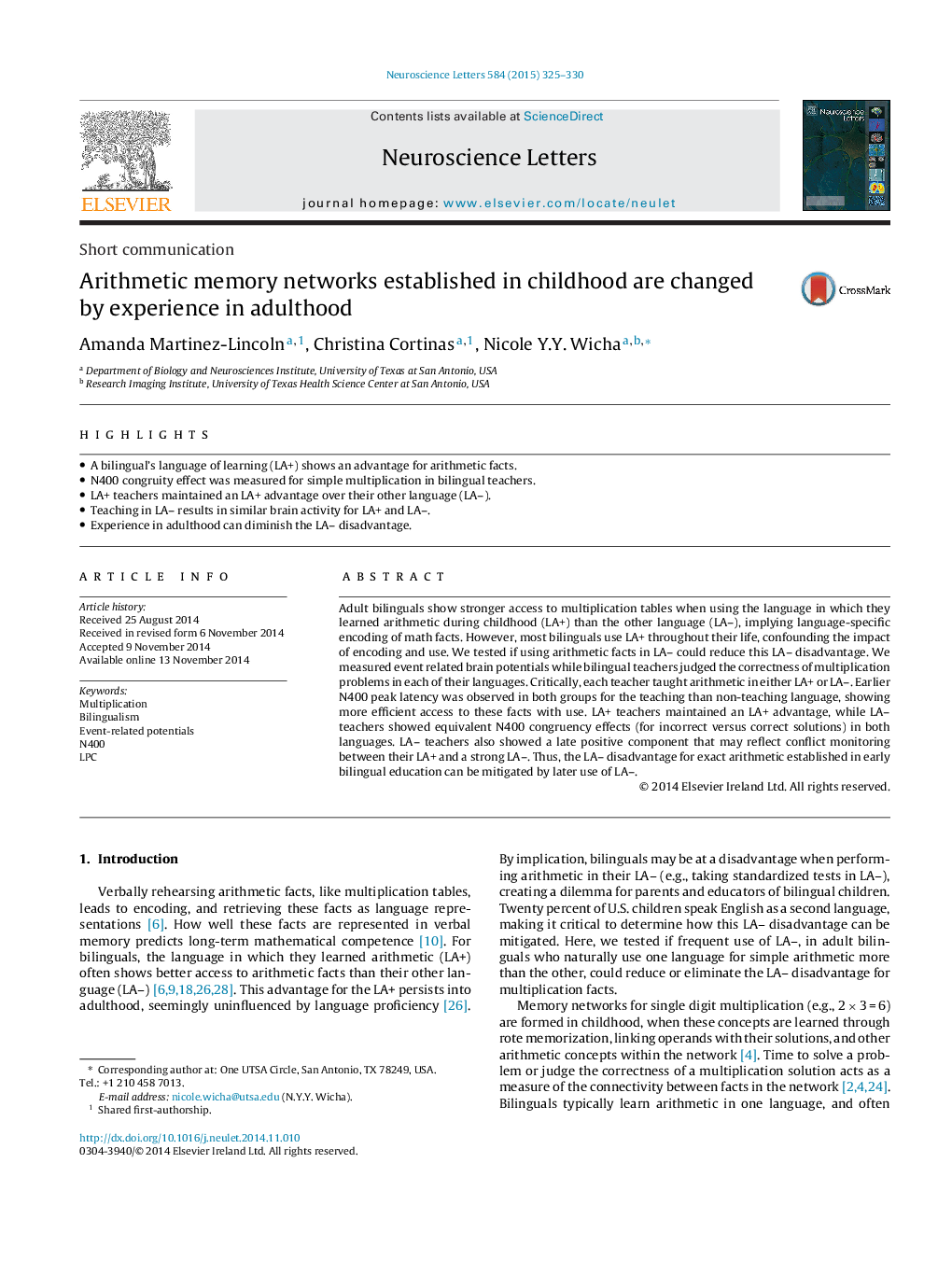| Article ID | Journal | Published Year | Pages | File Type |
|---|---|---|---|---|
| 6281523 | Neuroscience Letters | 2015 | 6 Pages |
â¢A bilingual's language of learning (LA+) shows an advantage for arithmetic facts.â¢N400 congruity effect was measured for simple multiplication in bilingual teachers.â¢LA+ teachers maintained an LA+ advantage over their other language (LA-).â¢Teaching in LA- results in similar brain activity for LA+ and LA-.â¢Experience in adulthood can diminish the LA- disadvantage.
Adult bilinguals show stronger access to multiplication tables when using the language in which they learned arithmetic during childhood (LA+) than the other language (LA-), implying language-specific encoding of math facts. However, most bilinguals use LA+ throughout their life, confounding the impact of encoding and use. We tested if using arithmetic facts in LA- could reduce this LA- disadvantage. We measured event related brain potentials while bilingual teachers judged the correctness of multiplication problems in each of their languages. Critically, each teacher taught arithmetic in either LA+ or LA-. Earlier N400 peak latency was observed in both groups for the teaching than non-teaching language, showing more efficient access to these facts with use. LA+ teachers maintained an LA+ advantage, while LA- teachers showed equivalent N400 congruency effects (for incorrect versus correct solutions) in both languages. LA- teachers also showed a late positive component that may reflect conflict monitoring between their LA+ and a strong LA-. Thus, the LA- disadvantage for exact arithmetic established in early bilingual education can be mitigated by later use of LA-.
